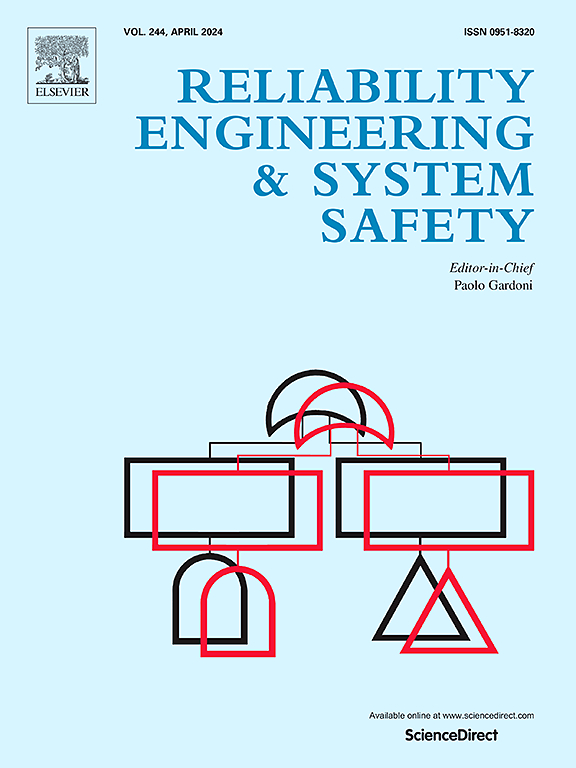Computational fluid dynamics -informed virtual safety assessment of steel-framed structure with fire-induced ductile failure
IF 9.4
1区 工程技术
Q1 ENGINEERING, INDUSTRIAL
引用次数: 0
Abstract
This paper proposes a Computational Fluid Dynamics-Informed (CI) Virtual Safety Assessment (VSA) framework for predicting the time-dependent ductile failure of steel-framed buildings during fire incidents. By incorporating a CI-based physical model, the spatiotemporally nonlinear temperature field in real fire scenarios can be reproduced and used as thermal boundary conditions for sequential thermal-elastoplastic analysis, enabling the assessment of fire-induced structural responses. Additionally, non-deterministic material properties caused by manufacturing imperfections are considered to analyze their impacts on uncertain high-temperature structural ductile deformation. To achieve rapid assessment, a Virtual Modeling (VM) technique is introduced to capture the nonlinear relationship between physical input parameters and corresponding structural responses. The proposed CI-VSA framework is applied to two real steel structures, a steel-framed factory and a transmission tower, to verify its efficiency and accuracy. The results demonstrate that, compared to traditional simulation-based prediction methods, the proposed CI-VSA framework reduces computational resource consumption by 99% and achieves highly accurate predictions for most sample points, with relative errors below 1%, under a training sample size of 1,000. In practice, the CI-VSA framework enables continuous prediction of spatiotemporal structural responses through the analysis of fire-thermal-structural interactions, achieves real-time updates of structural safety statuses, and ultimately provides early-stage safety warnings.
求助全文
约1分钟内获得全文
求助全文
来源期刊

Reliability Engineering & System Safety
管理科学-工程:工业
CiteScore
15.20
自引率
39.50%
发文量
621
审稿时长
67 days
期刊介绍:
Elsevier publishes Reliability Engineering & System Safety in association with the European Safety and Reliability Association and the Safety Engineering and Risk Analysis Division. The international journal is devoted to developing and applying methods to enhance the safety and reliability of complex technological systems, like nuclear power plants, chemical plants, hazardous waste facilities, space systems, offshore and maritime systems, transportation systems, constructed infrastructure, and manufacturing plants. The journal normally publishes only articles that involve the analysis of substantive problems related to the reliability of complex systems or present techniques and/or theoretical results that have a discernable relationship to the solution of such problems. An important aim is to balance academic material and practical applications.
 求助内容:
求助内容: 应助结果提醒方式:
应助结果提醒方式:


